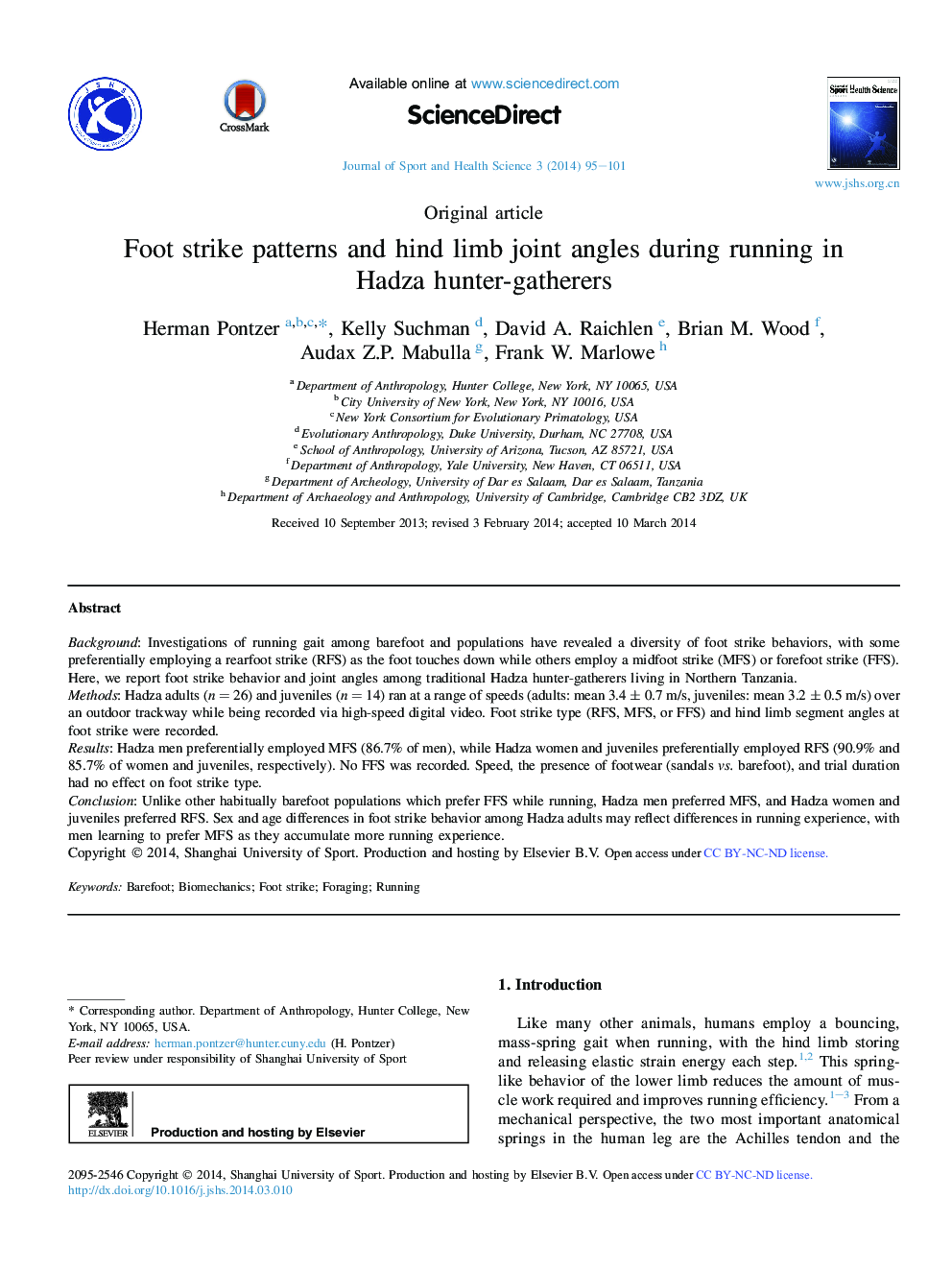| Article ID | Journal | Published Year | Pages | File Type |
|---|---|---|---|---|
| 1084136 | Journal of Sport and Health Science | 2014 | 7 Pages |
BackgroundInvestigations of running gait among barefoot and populations have revealed a diversity of foot strike behaviors, with some preferentially employing a rearfoot strike (RFS) as the foot touches down while others employ a midfoot strike (MFS) or forefoot strike (FFS). Here, we report foot strike behavior and joint angles among traditional Hadza hunter-gatherers living in Northern Tanzania.MethodsHadza adults (n = 26) and juveniles (n = 14) ran at a range of speeds (adults: mean 3.4 ± 0.7 m/s, juveniles: mean 3.2 ± 0.5 m/s) over an outdoor trackway while being recorded via high-speed digital video. Foot strike type (RFS, MFS, or FFS) and hind limb segment angles at foot strike were recorded.ResultsHadza men preferentially employed MFS (86.7% of men), while Hadza women and juveniles preferentially employed RFS (90.9% and 85.7% of women and juveniles, respectively). No FFS was recorded. Speed, the presence of footwear (sandals vs. barefoot), and trial duration had no effect on foot strike type.ConclusionUnlike other habitually barefoot populations which prefer FFS while running, Hadza men preferred MFS, and Hadza women and juveniles preferred RFS. Sex and age differences in foot strike behavior among Hadza adults may reflect differences in running experience, with men learning to prefer MFS as they accumulate more running experience.
